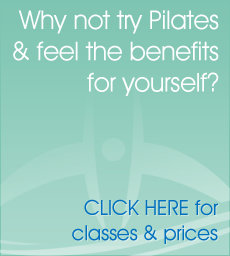FAQ
Q: Why do I need to attend an induction session?
A: Correct execution of Pilates exercises rely on basic skills of Alignment, Breathing and Centring. Understanding how to apply these skills will ensure that your practice is safe and effective. These skills have to be carefully taught in detail and this would not be possible in an already established class. By understanding these principals you will get more out of your Pilates practice making it more enjoyable and and safe.
Q: How big are the classes?
A: There are no more than twelve people in each class.
Q: What should I wear to a class?
A: You would need to wear warm, comfortable and reasonably tight fitting clothes to your class as it is important for your instructor to be able to see your movements clearly.You do not need any footwear other than socks.
Q: What equipment do I need to bring?
A: You will need a mat, head cushions, (ideally 4, a minimum of 2), and therabands of different strengths for arms and legs. As you progress you may wish to invest in other equipment. Please see links page for stockists.
Q: What happens if I miss a class?
A: Missed classes may be “made up” at another appropriate class if there is space available, depending on whether you choose to enrol in a Membership or a Course. Please note that the cost of a missed class cannot be refunded.
Q: I am in pain. Can I still start / continue with Pilates?
A: Always seek advice from your medical practitioner before taking up or continuing with any form of exercise.
Q: How often should I practise?
A: Most people do one or two classes per week, however to gain the most benefit from the method, some exercises should ideally be practised daily. However, attending Pilates classes regularly will heighten your body awareness and you will find yourself incorporating the principals and movement patterns you have learnt into your daily life.
Q: How long before I can see the results?
A: Joseph Pilates said, “In ten sessions you will feel the difference, in twenty you will see the difference, and in thirty you will have a new body.” However, everyone is different and develops at different rates and it is regular practice which allows the body to develop at the correct pace for each individual.
Q: Is Pilates similar to Yoga?
The simple answer is no! Pilates and yoga are completely different methods.
Yoga originated more than 5,000 years ago in India. It is a system with spiritual aspects and includes cleansing techniques, breathing, meditation, service and asanas (postures). In the western world the most practiced form of yoga is derived from Hatha yoga, which is the physical aspect of yoga. Yoga postures (asanas) are designed to open up and stretch the body and may include inversions, forward and backward bends, hip openers, arm balances and breath work. Yoga is meditation in movement and there are many styles to choose from.
Pilates was created by Joseph Pilates in the early 1900’s. His method emphasizes the the powerhouse muscles of the core which includes the pelvic floor, transverse abdominals, internal and external obliques, rectus abdominals, erector spinae, hip flexors, back and buttocks. The goal of Pilates is to strengthen and move primarily from the core. Pilates can be done on a mat or on specially designed equipment designed and created by Joe Pilates.
Both methods are mind/body exercises it takes concentration to practice Pilates and yoga but the methods and aims are different. They are complementary disciplines and Pilates core work will certainly help yoga practitioners stay strong and balanced.



